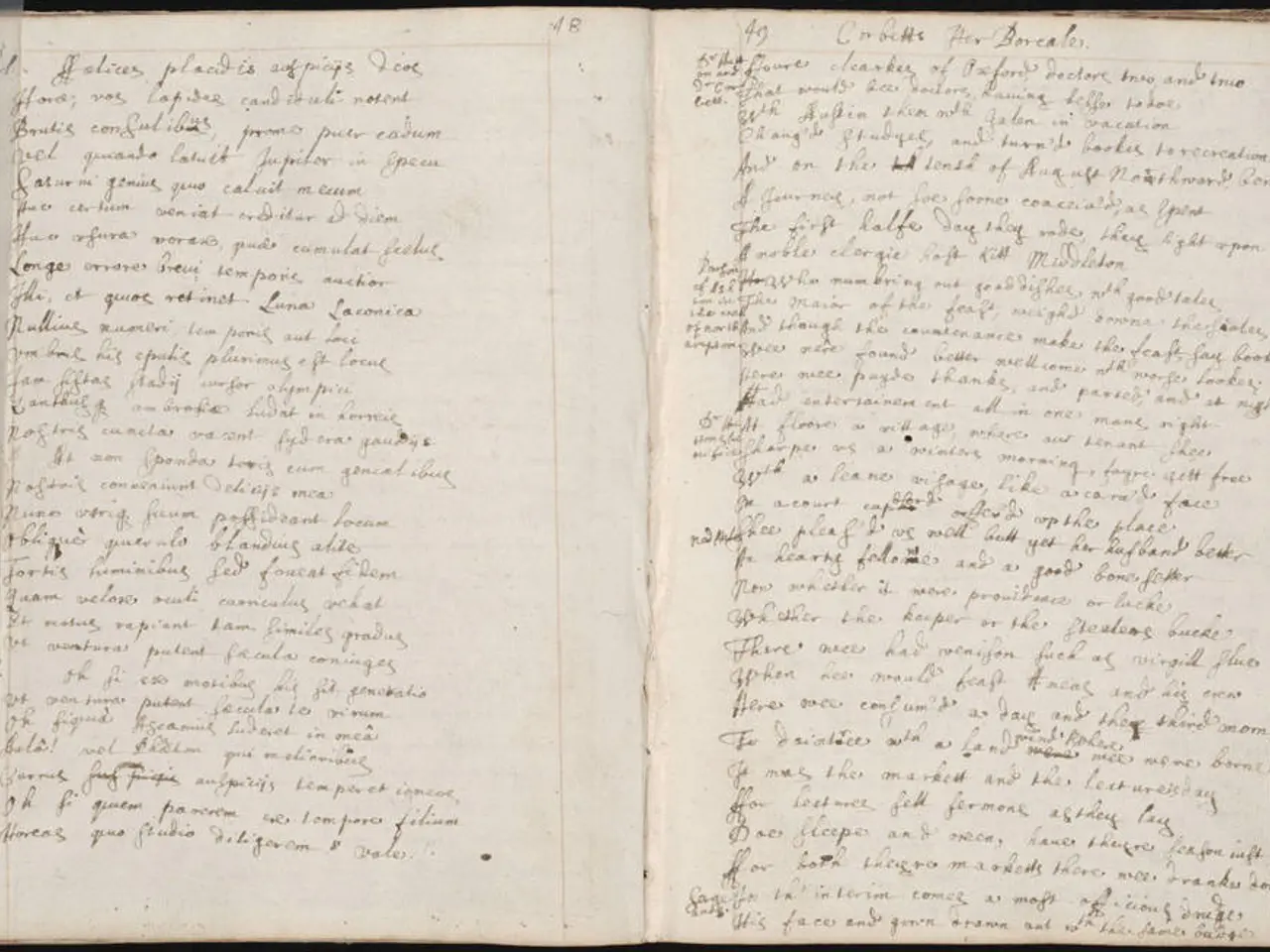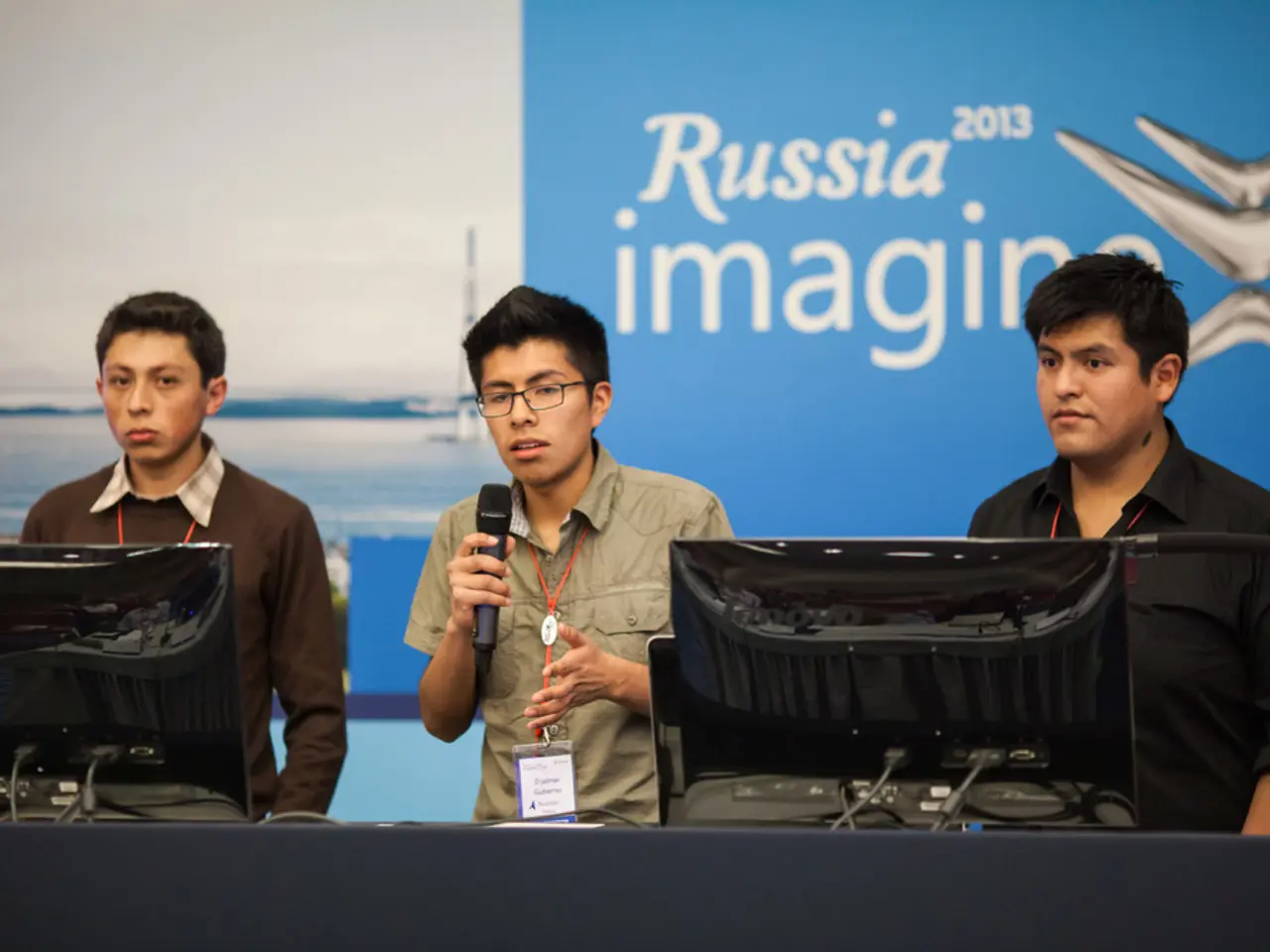Cosmic Perspectives: A Comparative Study Between Left and Right Ideologies
The left-right political spectrum, a fundamental division in political thought, originated during the French Revolution (1789). This spatial division symbolized a broader philosophical divide, with revolutionary change, equality, and universal suffrage on the left, and monarchy, hierarchy, and tradition on the right [2][3].
The left embraced ideals of universal equality, liberty, and democratic progress, often challenging established hierarchies and advocating for social and political reform. On the other hand, the right upheld hierarchy, tradition, and order, placing emphasis on organic social structures and often grounded in religious or providentialist ideas [2][3][4].
The philosophical significance of this split is deeply connected to cosmology and theology, especially on the right. Many early conservative and far-right thinkers like Joseph de Maistre promoted a "providentialist" worldview, in which the social order and monarchy were viewed as ordained by divine will—a cosmic hierarchy reflecting a natural or supernatural order [2][3]. This contrasts with the left's more secular, humanistic, and rationalist principles inspired by Enlightenment and revolutionary thought.
The right’s emphasis on organic social unity and traditional values often intertwined with theological conservatism, defending a moral order perceived as reflecting a cosmic or divine architecture of society [4]. Conversely, left ideologies like Marxism criticized these religious and hierarchical legitimizations, promoting instead materialist and egalitarian perspectives aiming for radical transformation of society through class struggle and revolution [1]. In Marxist theory, historical materialism replaces cosmic or theological explanations with economic and social forces as the drivers of history.
| Aspect | Left Ideologies | Right Ideologies | |----------------------|---------------------------------------------------------|------------------------------------------------------------------| | Historical origin | Emerged from revolutionary ideas promoting equality | Rooted in defense of monarchy, hierarchy, and tradition | | Philosophical basis | Enlightenment ideals, secular humanism, egalitarianism | Providentialism, cosmic order, divine sanction of social order | | Relation to theology | Often secular/critical of religion | Integrates theology with political legitimacy (e.g., divine right monarchy) | | Cosmological ideas | Progress and human emancipation through reason | Social order reflects a cosmic hierarchy ordained by a higher power|
This left-right divide is not only a political distinction but reflects deep metaphysical and theological conceptions of order, nature, and authority developed during a revolutionary era that redefined Western political philosophy [2][3][4].
Interestingly, the new religion (of the left) differs from all previous religions on three critical points: (1) its cosmology implies nihilism, (2) its moral precepts are fraudulent, and (3) its politics leads to killing and destruction [5]. The left-hand path has often been synonymous with evil [6].
As society continues to evolve, the deep currents of history carry us along, while the shallow eddies come and go without lasting effects. The war between left and right can be seen as a religious civil war, deriving from diametrically opposed metaphysical and cosmological ideas [7]. However, the present political hysteria, which builds on itself, cannot make a happy end [8].
References: [1] Marx, K. (1848). The Communist Manifesto. [2] Burke, E. (1790). Reflections on the Revolution in France. [3] Maistre, J. de (1819). Considerations on France. [4] Tocqueville, A. de (1835). Democracy in America. [5] Kojeve, A. (1969). Introduction to the Reading of Hegel: Lectures on the Phenomenology of Spirit. [6] Blavatsky, H. P. (1888). The Secret Doctrine. [7] Schmitt, C. (1922). Political Theology: Four Chapters on the Concept of Sovereignty. [8] Orwell, G. (1949). Nineteen Eighty-Four.
- The left's political ideologies, driven by Enlightenment ideals, secular humanism, and egalitarianism, fundamentally differ from the right's providentialist and traditionalist perspectives, as both sides grapple with the divine sanction of social order, as evidenced in the writings of early thinkers like Marx and Maistre.
- In the context of Russian and Chinese politics, this historical left-right divide reflects not only political distinctions but also deep metaphysical and theological conceptions of order, nature, and authority, as illustrated in works like Marx's The Communist Manifesto and Maistre's Considerations on France.
- Today, as the world grapples with general-news issues like power struggles and social reform, understanding the historical philosophical differences between the left's materialist and egalitarian perspectives and the right's theological conservatism, as demonstrated in thought leaders such as Marx and Maistre, remains relevant in shaping policy decisions and societal structures.







